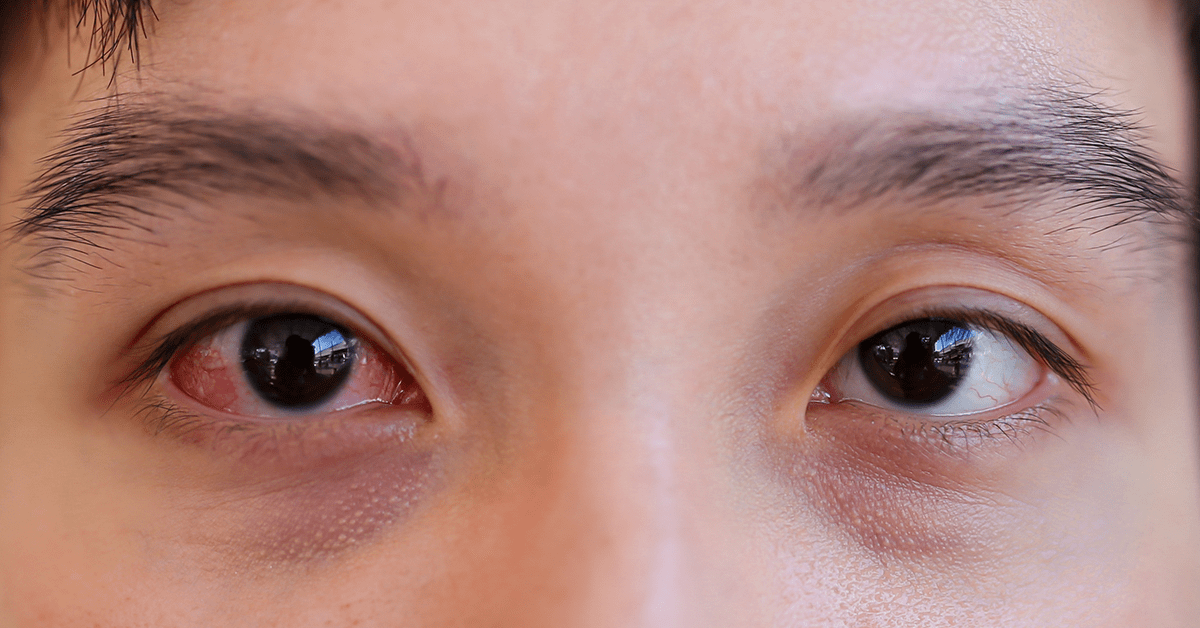
Waking up with an irritating pink eye is always a bummer. Since this infection is contagious, you are likely to skip your work or school day if you even suspect this to be a pink eye and not a regular seasonal allergy. Read on ahead about pink eye vs. allergies to understand the difference and its treatment.
Commonly known as conjunctivitis, pink eye is contagious and could be caused by bacteria or viruses and spreads very easily through interpersonal interaction in schools, workplaces, or other crowded places. Viral conjunctivitis occurs through the same virus that causes symptoms of the common cold, such as sore throat and runny nose. However, bacterial infections are usually caused by the same bacteria that causes strep throat, which feels like a scratchy and sore throat.
The symptoms of viral conjunctivitis include redness of the eyes, a burning sensation, and a watery discharge. In contrast, bacterial conjunctivitis causes redness and soreness of the eyes coupled with pus formation in the eye, making it sticky.
The other type of pink eye that is not contagious is a result of an allergic reaction to environmental dust, animal fur, car fumes, pollen, chlorinated water, cigarette smoke, etc. A discussion on pink eye vs. allergies can be very complex, and we are here to help you figure out the root cause of your irritating eyes.

According to experts, allergies vs. pink eye symptoms are slightly different and, hence, difficult to differentiate. Allergic conjunctivitis usually occurs in both eyes and gives rise to intense irritation, itching, swelling, and tearing up of the eyes. They may follow a wave of seasonal allergies and can be present alongside an itchy nose, sneezing, asthma, and a scratchy throat.
Bacterial conjunctivitis usually occurs with an ear infection, while viral conjunctivitis occurs after a respiratory infection or common cold. The latter, if not treated promptly, can spread to the other eye within a few days. While discharge from the eyes is common in viral and bacterial conjunctivitis, discharge from a bacterial pink eye is less watery.
One of the most important things to consider while distinguishing between pink eye and allergies is the ongoing season. A change of season or a dry and polluted atmosphere is more likely to be responsible for allergic conjunctivitis.
Suppose you are aware of your allergies or food intolerances. In that case, any exposure to an allergen or irritant before the development of pink eye could help you conclude a diagnosis for your eye irritation. However, if you are an outgoing person, who has previously been to a crowded public place, your workplace, or your school and have interacted with someone suffering from pink eye, you are more likely to have developed the bacterial or viral form of pink eye.
Allergies do not often show severe symptoms and go away in a shorter period than the pink eye that is caused by other factors. In both adults and children, bacterial or viral pink eye can give rise to severe symptoms if not treated effectively. It may cause inflammation in the cornea of the eye, thereby affecting vision. A constant feeling of having something stuck in your eye, light sensitivity, and blurred vision are common viral or bacterial pink eye symptoms.
We recommend visiting the doctor to arrive at the correct diagnosis for your condition. While we can only guess on our condition at best, a doctor will concur an accurate diagnosis according to the protocol, making it more reliable.
A doctor uses the patient’s history, current symptoms, and a thorough examination of the eye to determine the patient’s condition. In some cases, samples of eye discharge are also sent to the laboratory for a culture. This enables the doctor to assess the reports for the actual cause of the pink eye and then treat it accordingly.
This article focuses on pink eye vs. allergies because we realize how important it is to differentiate between conjunctivitis causes to treat them promptly. Conjunctivitis is likely to go away on its own within a week or two, regardless of its root cause. However, if your condition lasts for longer, it is best to visit an ophthalmologist in any case.
With a viral infection in the eye, the treatment plan is vague, and usually, the pink eye goes away on its own. For added comfort, we recommend placing a cool, damp washcloth on your eyes to relieve them temporarily. Antibiotic eye drops usually treat a pink eye caused by a bacterial infection. Your doctor may prescribe the dosage according to the severity of the pink eye infection and the symptoms it displays.
Conjunctivitis caused by allergies can be treated and healed by certain eye drops that help with the symptoms of allergic pink eye, such as puffiness and redness. Often, an eye ointment may be used to rinse the eye free of the allergen or toxin and help the eye retain its normal color and behavior.
Hygiene plays an essential role in preventing the development of the pink eye, as it does with any other disease or infection. The following methods will help in preventing the development and spread of pink eye.
It is important to keep in mind that pink eye is equally contagious as the common cold. To prevent the extreme discomfort caused by pink eye, you should practice proper hygiene.
See Also: Food Allergies And Intolerances
The symptoms of pink eye vary from person to person, depending on the condition’s cause, from mild to severe. Although we realize that distinguishing between pink eye and allergies is difficult, we hope this article has now made it a little easier. By observing your symptoms and looking at your medical history, you can determine which pink eye you are suffering from and seek help accordingly.